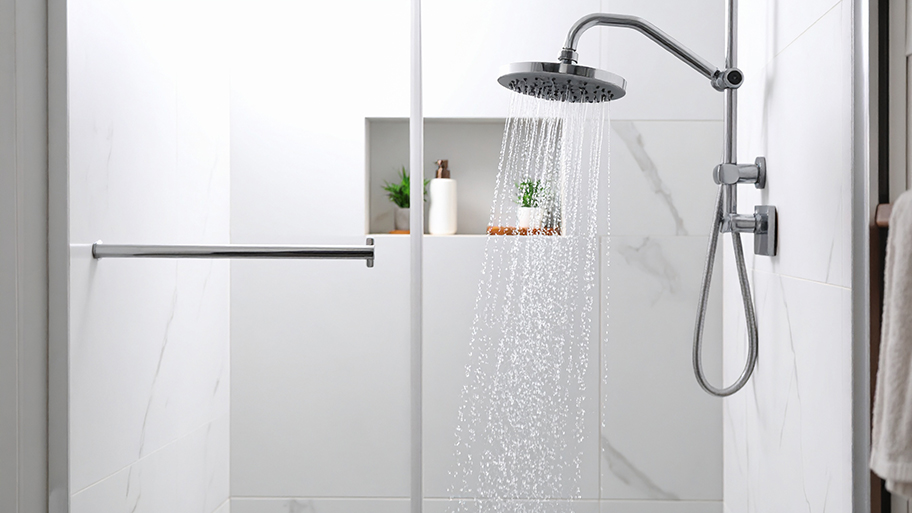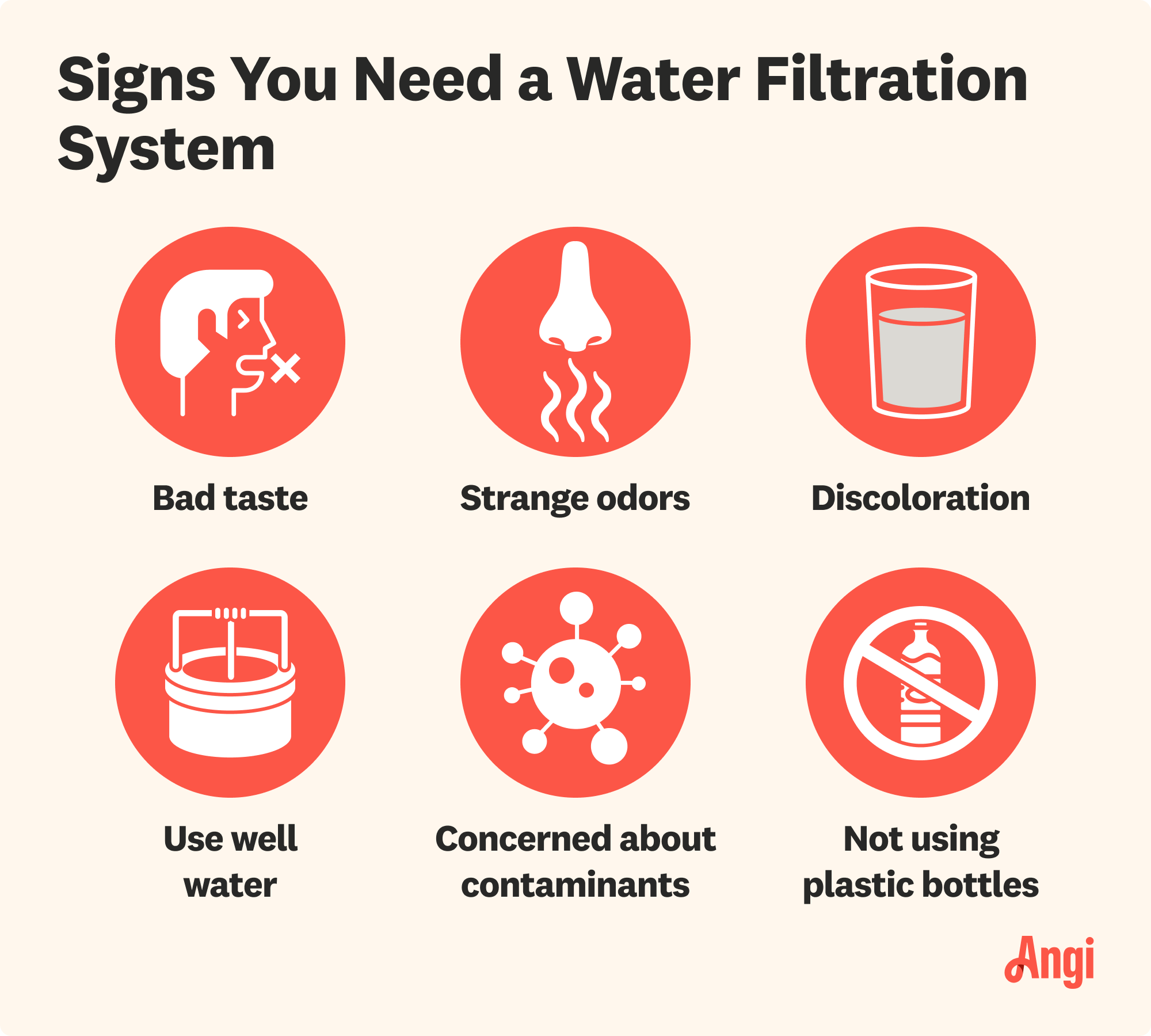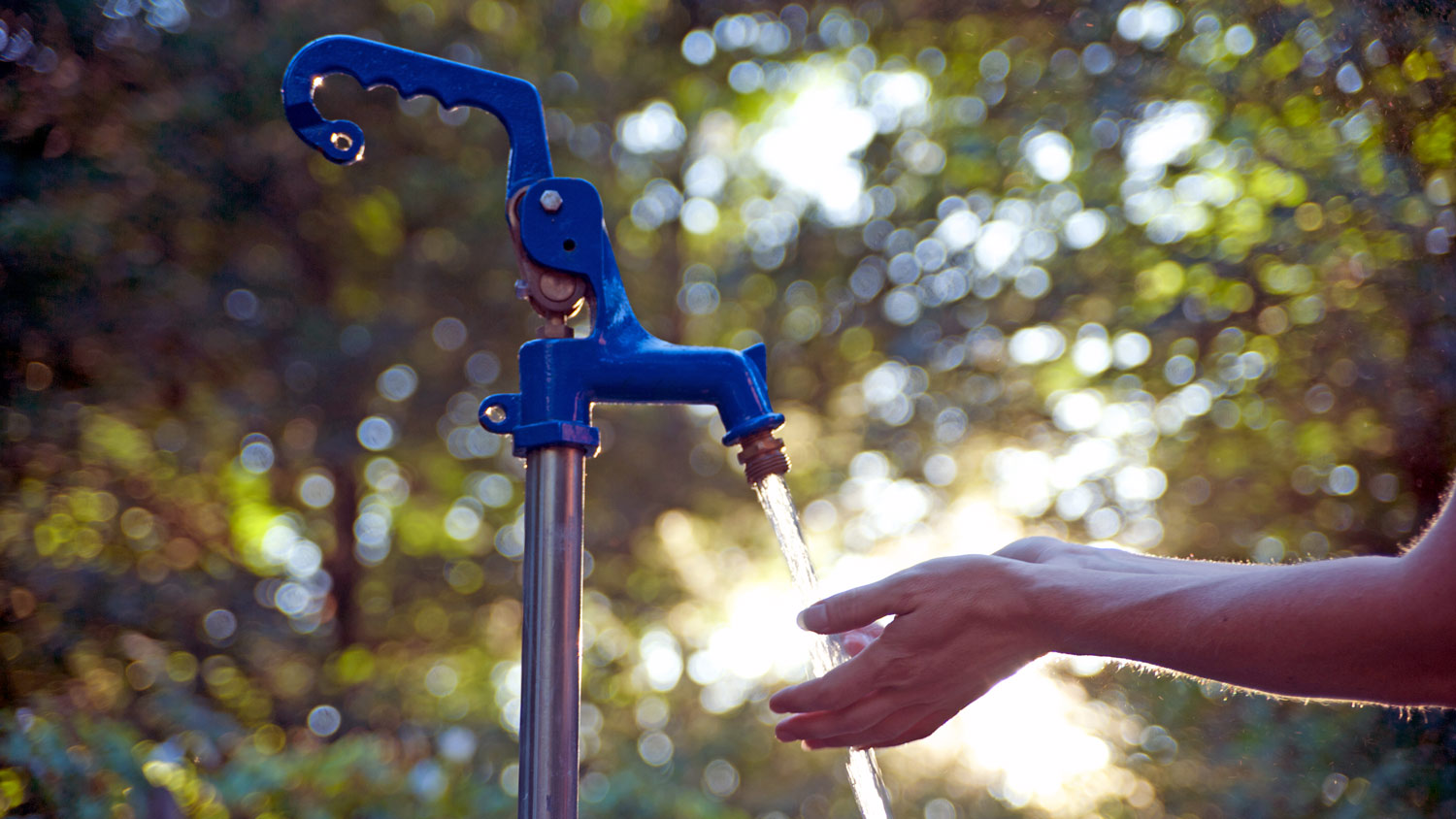
Water softener repair costs can add up, but they’re almost always worthwhile. Use this guide to see what your project is going to cost before you get started.
Let it flow, let it flow, let it flow


There are 10 main types of water filters: mechanical, activated carbon, reverse osmosis, ion exchange, ultraviolet, ceramic, distillation, infrared, activated alumina, and microfiltration. If you’re looking to bring cleaner, fresher-tasting water into your home, a water filtration system is a good investment. However, with so many different types of water filters available, understanding your options can get a bit overwhelming. Read on to explore the basics of today’s most common water filters, including how each type works and its pros and cons.

A mechanical water filtration system uses a mesh barrier, screen, or porous material to prevent contaminants—like sediment, dirt, and rust—from entering your water supply. They have a micron rating that reflects how effective the filter is. Lower ratings equate to better particle-blocking capabilities.
| Pros | Cons |
|---|---|
| Moderately priced | Doesn’t get rid of chemicals |
| Easy to install and maintain | Filters need regular changing |
| Improves water clarity | Can’t remove microorganisms |
Best for: Filtering out visible debris and sediment
These water filters have a bed of activated carbon that traps chlorine and volatile organic compounds (VOCs). They can also remove some pesticides and heavy metals (including lead), but they don’t work on minerals, microbes, or salt. Like mechanical filters, activated carbon filters often serve as one of the first stages in multi-stage water filtration systems.
| Pros | Cons |
|---|---|
| Gets rid of pesticides, VOCs, and certain heavy metals | Can’t remove minerals, microbes, or salt |
| May improve water’s smell and taste | Not effective against inorganic pollutants |
| Fairly cost-effective and simple | Requires periodic filter changes |
Best for: Eliminating VOCs, chlorine, certain heavy metals, and pesticides
Reverse osmosis (RO) filters force water through a semipermeable membrane under high pressure. This process removes contaminants and impurities as small as an ion, including chemicals, microorganisms, dissolved salts, and heavy metals.
| Pros | Cons |
|---|---|
| Capable of removing most contaminants | Pricier than many other options |
| Can decrease water hardness | Wastes water |
| May improve water’s taste | Strips healthy minerals from water |
Best for: Producing ultra-clean drinking water that’s free from nearly all contaminants
Ion exchange filters swap hard water ions (such as calcium and magnesium) for softer ones (like sodium and hydrogen). They effectively serve as a water softener, which makes them suitable for areas with hard water. However, they can’t remove many types of contaminants, including bacteria, viruses, and VOCs.
| Pros | Cons |
|---|---|
| Reduces water hardness | Increases sodium levels in water |
| Limits limescale buildup in pipes and appliances | Doesn’t remove bacteria or organic contaminants |
| Blocks heavy metals | Expensive to run |
Best for: Minimizing scale buildup and softening hard water
The main difference between soft water and hard water is the mineral content. Hard water has higher levels of calcium and magnesium, whereas soft water has undergone a process to remove these minerals.

When water passes through an ultraviolet (UV) filter, it’s sanitized by a UV light. This light damages the DNA of any microorganisms in the water, including bacteria and viruses, which disrupts their ability to reproduce and harm your health. UV filters are excellent for disinfection, but they’re most effective when paired with filters that can block other contaminants.
| Pros | Cons |
|---|---|
| Removes microorganisms | Doesn’t filter out chemicals or heavy metals |
| Energy efficient | Works best with clear water |
| Works without chemicals | Can’t remove particles |
Best for: Eliminating bacteria and viruses
Ceramic is a porous material, so when it’s used as a water filter, it can trap bacteria, parasites, and other contaminants. These cost-effective filters can be found in areas where waterborne diseases—like E. coli and salmonella—are a concern. However, their filtration capability is somewhat limited, so it’s best to use them in conjunction with other filters.
| Pros | Cons |
|---|---|
| Inexpensive | Not good for removing viruses, heavy metals, or chemicals |
| Works well against bacteria and parasites | Needs regular cleaning and maintenance |
| Suitable for remote or resource-limited communities | Slow filtration |
Best for: Filtering out bacteria and sediment in places with limited clean water
Distillation is a water purification system that involves capturing the steam from boiling water, then letting it cool and condense back into a liquid. As the vapor cools, it leaves behind many impurities and contaminants, including minerals, heavy metals, bacteria, and viruses. The result is a highly purified form of water, which is often used in laboratory and medical settings.
| Pros | Cons |
|---|---|
| Eliminates many contaminants | Expensive to run |
| Creates exceptionally pure water, no matter the quality of the source water | Time-consuming filtration process |
| Doesn’t use chemicals | Removes beneficial minerals |
Best for: Situations where ultra-pure water is necessary, like medical work
This type of water filter system uses infrared light to change the physical qualities of water, decreasing the size of the water molecules so that they’re more easily absorbed by the body. This process softens the water but doesn’t remove contaminants, so infrared filters should be integrated with other types for maximum filtration.
| Pros | Cons |
|---|---|
| Softens water | Doesn’t get rid of physical contaminants |
| Fairly easy to install and maintain | Pricey |
| Works with other types of filters | Newer filtration method with debatable effectiveness |
Best for: Pairing with other types of filters
As water moves through an activated alumina filter, certain contaminants—including arsenic, fluoride, and selenium—attach themselves to the alumina (aluminum oxide). It works much like an activated carbon filter, except it removes different contaminants. Before installing one of these filters, make sure you know how to dispose of them responsibly without harming the environment. If you have questions, contact a local water softener installation company.
| Pros | Cons |
|---|---|
| Blocks arsenic, fluoride, and selenium | Doesn’t filter out bacteria or many other contaminants |
| Relatively affordable | Water’s pH level impacts its effectiveness |
| Doesn’t remove beneficial minerals | Filter disposal can be tricky |
Best for: Regions where fluoride, arsenic, and selenium levels are particularly high
In a microfiltration system, water flows through a porous membrane, which captures large particles and certain microorganisms, including bacteria and some viruses. While they are energy-efficient and chemical-free, microfilters aren’t effective at removing chemicals or dissolved contaminants.
| Pros | Cons |
|---|---|
| Blocks solids and some microorganisms | Can’t filter dissolved contaminants, including salts and minerals |
| Doesn’t use chemicals | Pores are small and can get clogged |
| More energy efficient than many other filters | Installation can be expensive |
Best for: Filtering out bigger particles, bacteria, and certain viruses
According to Angi customers, 36% of homeowners—or nearly 4 out of 10—notice a strange taste or odor in their home's water. Some people detect the smell of rotten eggs or chemicals. For others, the water may taste metallic or salty. Call a pro to get to the bottom of the issue.
The best filter for your home’s drinking water depends on your household's needs and budget. If you have a large household with several people drinking tap water, you’d be wise to invest in a whole-whole-home water filtration system since it provides filtration to all your faucets 24/7. However, under-sink filtration systems are ideal for smaller homes with just one to three household members. If you live solo, you’d be fine with a water pitcher filter to meet your filtration needs.
I had a great experience with Local Plumbing & HVAC Pros. From start to finish, they were professional, knowledgeable, and efficient. They installed our tankless water heater perfectly and made sure everything was done to code. Communication was clear, the work area was left clean, and the...
Great-Work Great-Service Great-Prices , Came to replace my water-heater , Out With the Old & In with the New . I was very satisfied with the Job getting Done - ASAP. Highly recommended , I will definitely call again for future services.
Norman and his crew were pleasant and very professional. Norman did finish the job as planned and on time. Norman is definitely a general contractor you want for your job. If I could him 10 stars I WOULD. I would recommend him to my family and friends.
Jeremiah helped us completely transform our master bathroom from a dark outdated layout to a beautiful spa oasis! We brought him in for a consultation and within the first 5 minutes, I knew he was the right one for the job. He had so many amazing ideas and recommended layouts that ultimately...
Golden Pacific Construction completely renovated my neighbor's home for the past 18 months. Over the course of that time, they have not been careful and keep running over my property's sprinkler system, damaging it multiple times. The first time it happened, I had my gardener fix it. But...
They are a stellar company. Dave and his crew were on time, courteous and efficient. They quoted the price that was due, and then charged accordingly. We live in a condo and that causes problems when trying to hire someone to fix anything water-related in our building and our system is water...
I was feeling anxious about finishing up the work on my guesthouse, because my previous workers tried to overcharge me and left a lot of work undone. LUCKILY, I got linked up with Labi Builders and I immediately felt that they were the ones to get the job done and their prices were...
From booking this work to replacing the broken water pump SouthLand representatives were pleasant and professional to work with. GoodThoughts, Frank
Steve at AKME helped me fix multiple floor to ceiling cracks in my foundation wall where water was penetrating. He also provided excellent advice on how to solve the source of the problem. He is very professional and trustworthy. He does not oversell. The quality of his work is excellent and...
Thank you Paul and David for such a seamless process of getting our water softener + filter installed! Paul worked with us, was always available, and ensured we got the exact system we needed. David was such a pro and installed it for us exactly how we needed it. You can tell how much they...
From average costs to expert advice, get all the answers you need to get your job done.

Water softener repair costs can add up, but they’re almost always worthwhile. Use this guide to see what your project is going to cost before you get started.

Discover how much well water treatment systems cost, including installation, maintenance, and tips to save. Get expert insights to plan your water system project.

Wondering about water treatment system costs? Learn average prices, key cost factors, and ways to save on installation and maintenance for your home.

Having an issue with your water softener? Learn the parts of a water softener and how they work together to treat hard water with this guide.

Water softeners need salts, but which type is best? Learn the key differences between potassium chloride versus sodium chloride water softener salts.

Follow these water softener maintenance tips to keep minerals out of your water, avoid malfunctions, and prolong your unit’s service life.